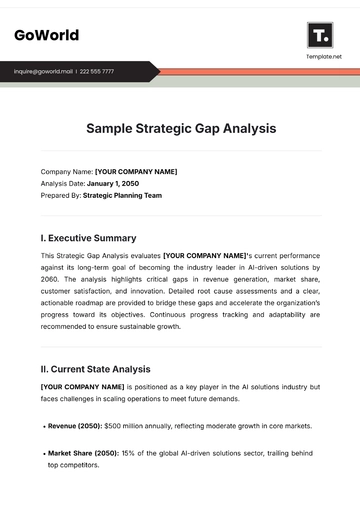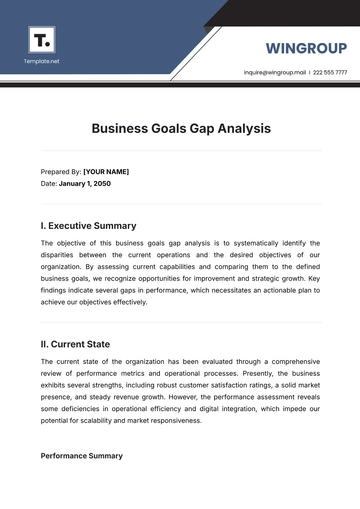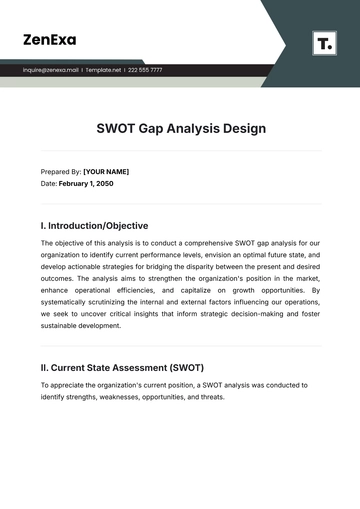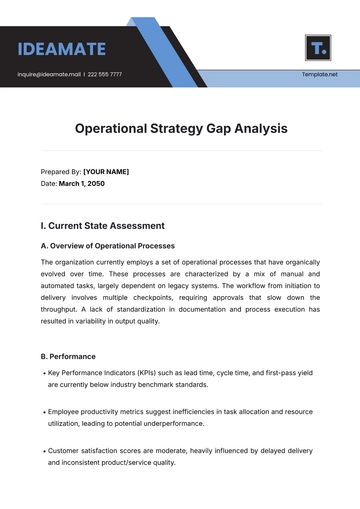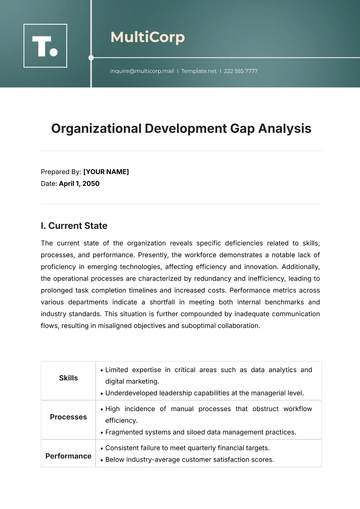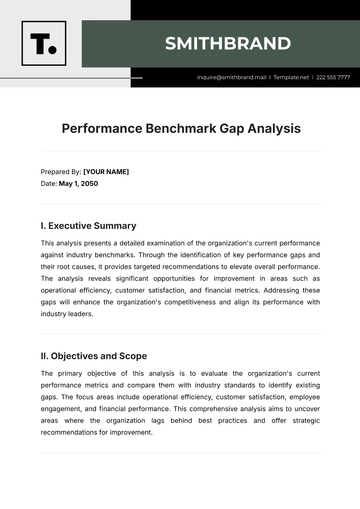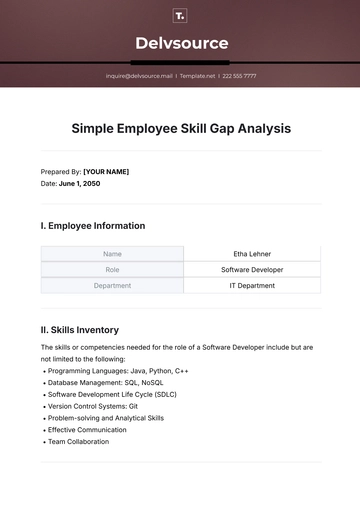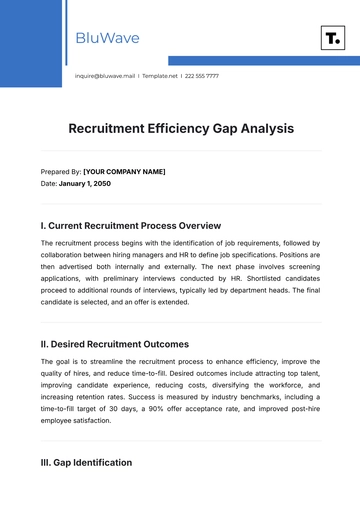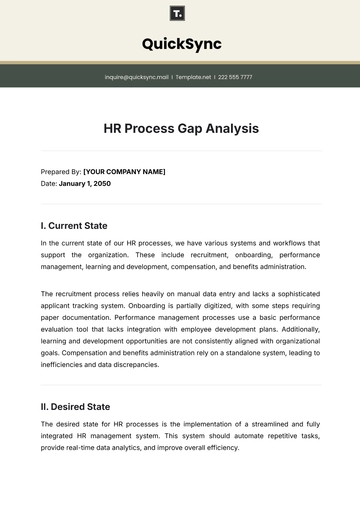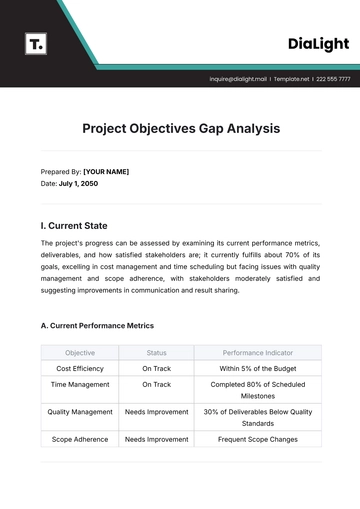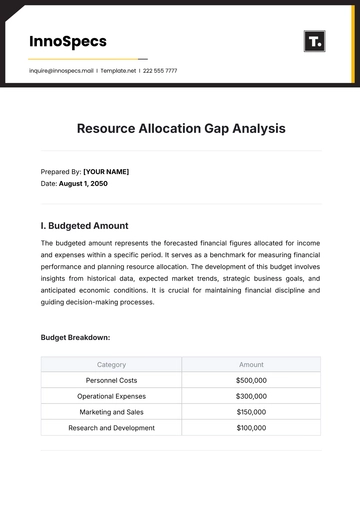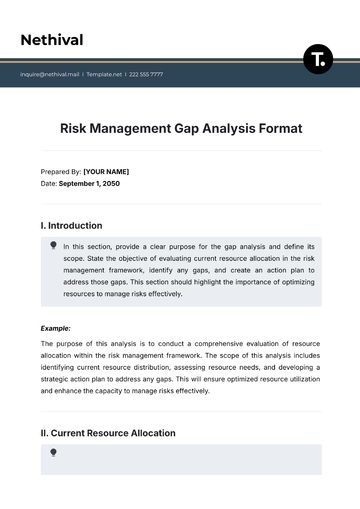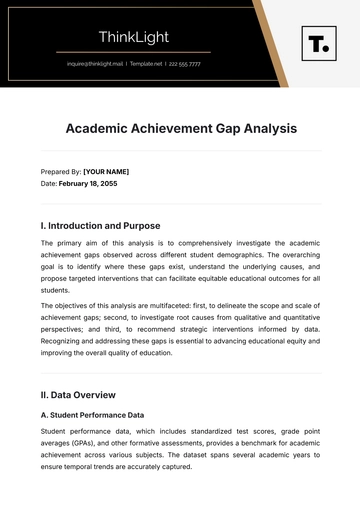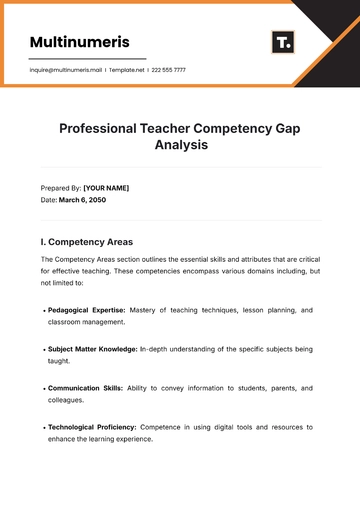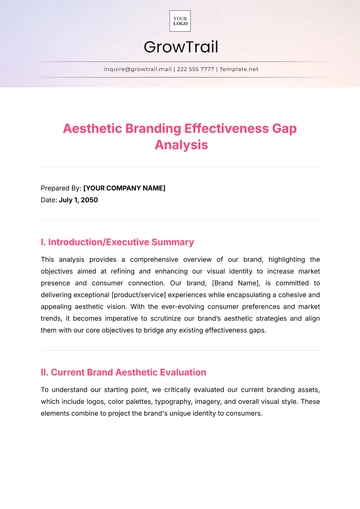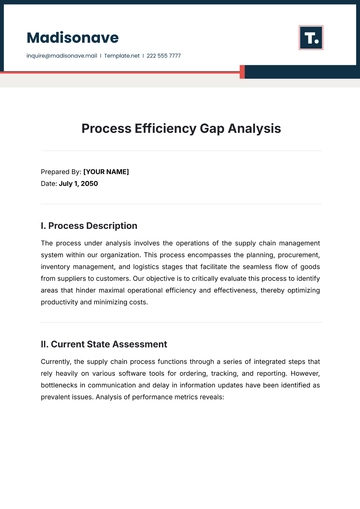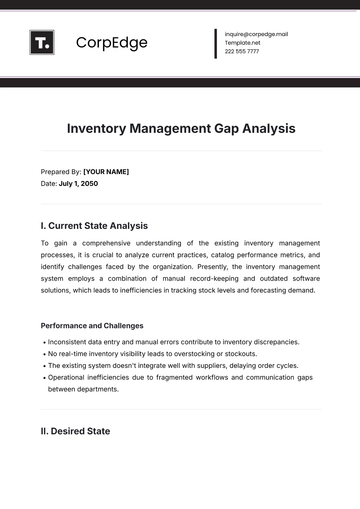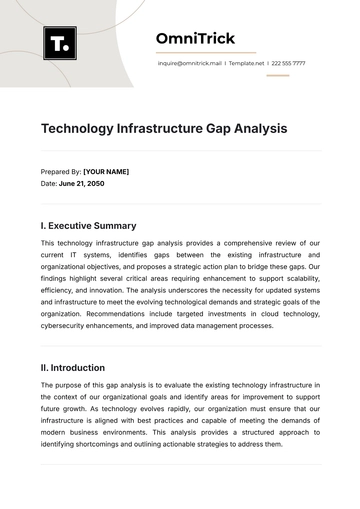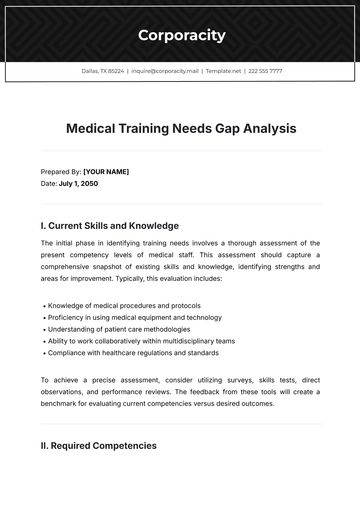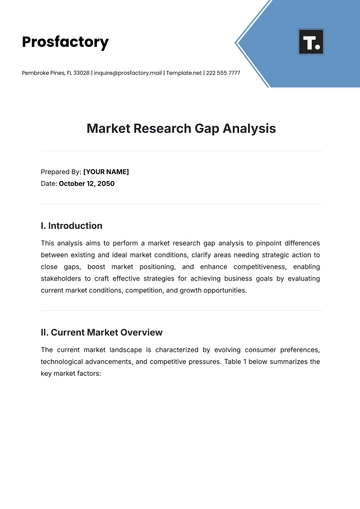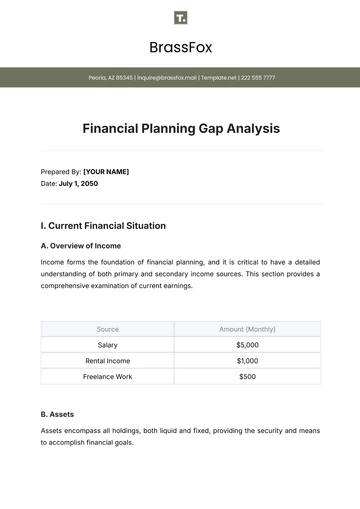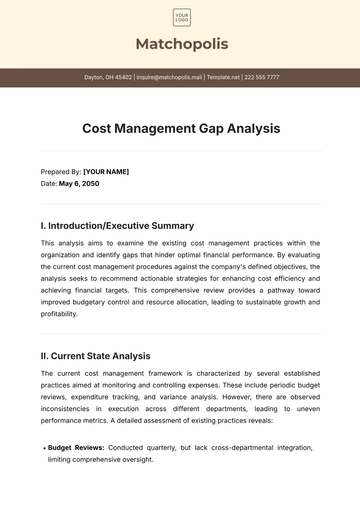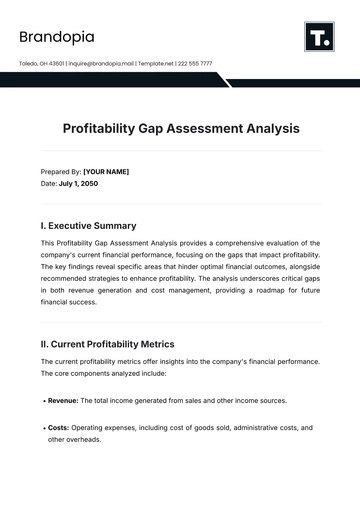Free Customized Training Feedback & Analysis Report HR
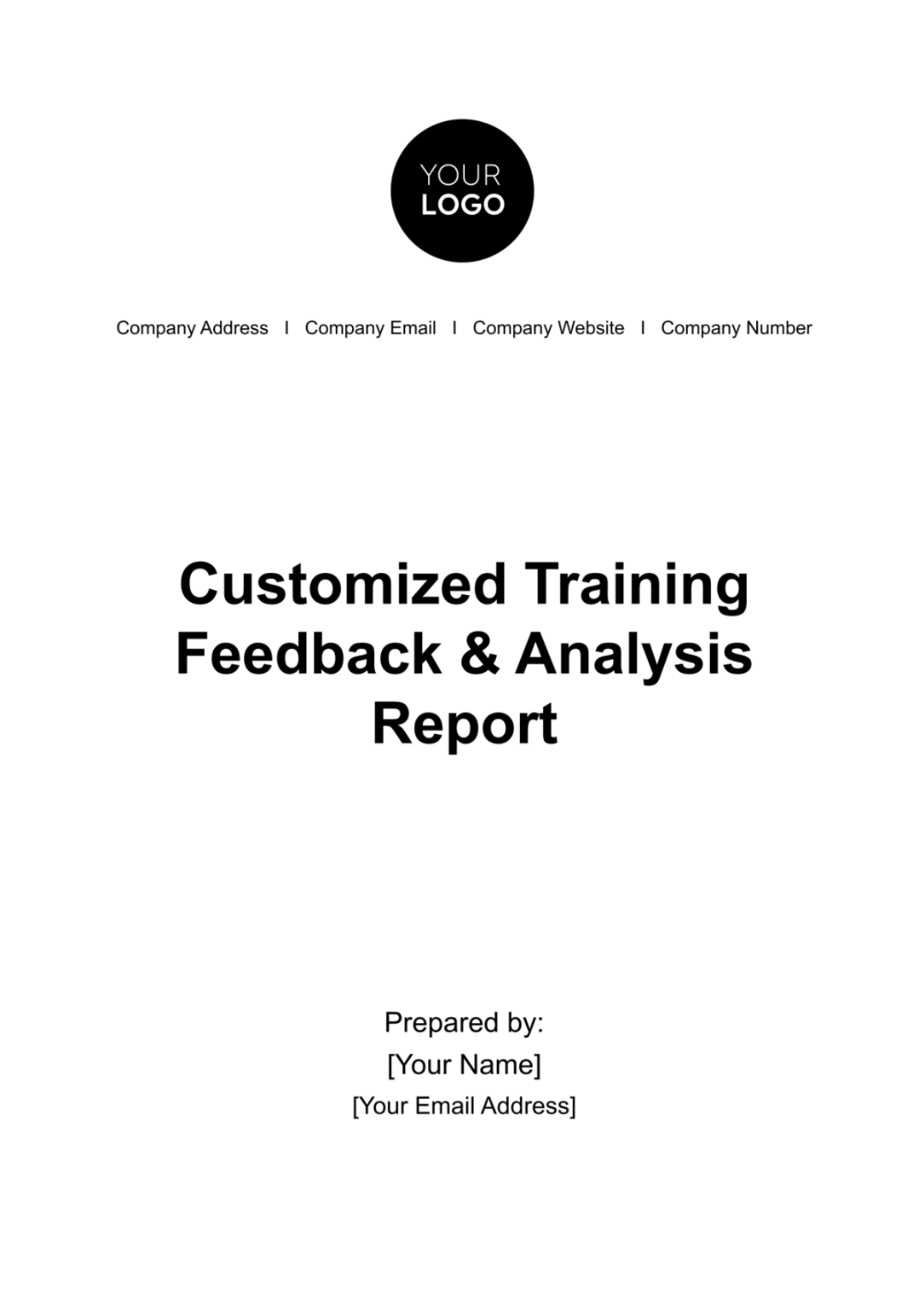
& Analysis Report
TABLE OF CONTENTS
I. Executive Summary .....................................................................................3
Training Program Overview ..........................................................................................3
II. Objectives ......................................................................................................3
III. Methodology ................................................................................................3
Data Collection Methods ..............................................................................................3
IV. Training Content and Materials Evaluation ........................................4
Relevance of Training Content ....................................................................................4
Quality of Training Materials ........................................................................................4
V. Training Delivery Evaluation ....................................................................5
Effectiveness of Training Methods .............................................................................5
Trainer's Effectiveness and Communication. .............................................................6
VI. Participant Feedback ................................................................................7
Overall Satisfaction .......................................................................................................7
Comments and Suggestions ........................................................................................7
VII. Learning Assessment .............................................................................8
Pre-Training and Post-Training Assessment Results ................................................8
VIII. Return on Investment (ROI) Analysis ................................................9
Costs of Training Program ...........................................................................................9
Benefits and ROI ............................................................................................................9
IX. Conclusion .................................................................................................10
X. Recommendations ....................................................................................10
Executive Summary
The Executive Summary provides a comprehensive overview of the training program's evaluation and its outcomes. It aims to present a clear picture of the training program's effectiveness and the impact it has had on the organization's participants.
Training Program Overview
The [Company Name] recently conducted a comprehensive tech training program with the primary objective of enhancing the technical skills and knowledge of our employees. This training program was designed to equip participants with the latest industry knowledge, foster the adoption of best practices, and enhance problem-solving skills in a tech-centric environment.
Objectives
The primary objectives of this training program were to:
Improve participants' technical proficiency.
Foster the adoption of best practices.
Enhance problem-solving skills in a tech-centric environment.
Data Collection Methods
Pre-training and Post-training Assessments: Participants were evaluated using knowledge assessments before and after the training program to measure the increase in technical knowledge and skills.
Surveys: Participants were asked to complete anonymous surveys to provide feedback on the training content, delivery, and overall satisfaction.
Interviews: A subset of participants and trainers were interviewed to gather qualitative insights and opinions about the training program.
Observations: Trainers and evaluators observed the training sessions to assess the effectiveness of the training methods and participant engagement.
Training Content and Materials Evaluation
This section provides a detailed evaluation of the training program's content and materials, including their relevance and quality. It is essential to ensure that the training content and materials align with the participants' needs and expectations.
Relevance of Training Content
One of the crucial aspects of any training program is the relevance of the content to the participants' roles and the industry's current standards. To assess this, participants were asked to rate the relevance of the training content on a scale of 1 to 5, with 1 being "Not Relevant" and 5 being "Highly Relevant." The results are summarized in the following table:
Relevance Rating | Percentage of Participants |
Highly Relevant (5) | 65% |
Very Relevant (4) | 25% |
Moderately Relevant (3) | 7% |
Somewhat Relevant (2) | 2% |
Not Relevant (1) | 1% |
As shown in the table, 65% of participants found the training content to be highly relevant, indicating that it aligned closely with their roles and needs. Additionally, 25% considered it very relevant, while 7% rated it as moderately relevant. Only 2% found it somewhat relevant, and 1% indicated that it was not relevant to their roles.
Quality of Training Materials
In addition to content relevance, the quality of training materials plays a vital role in the overall effectiveness of a training program. Participants were asked to rate the quality of training materials on a scale of 1 to 5, with 1 being "Poor" and 5 being "Excellent." The following table summarizes the ratings:
Material Quality Rating | Percentage of Participants |
Excellent (5) | 45% |
Very Good (4) | 40% |
Good (3) | 12% |
Satisfactory (2) | 2% |
Poor (1) | 1% |
As depicted in the table, the quality of training materials received positive feedback, with 45% of participants rating them as excellent, highlighting their high quality. An additional 40% considered them very good, and 12% rated them as good. Only 2% found the materials satisfactory, while 1% expressed dissatisfaction with the training materials.
Overall, the evaluation of the training content and materials indicates that a significant portion of participants found them to be highly relevant and of high quality, contributing to a positive learning experience. However, there is room for improvement to address the needs of participants who found the content somewhat relevant or less relevant and to enhance the satisfaction of those who rated the materials as satisfactory or poor.
Training Delivery Evaluation
This section assesses the effectiveness of the training methods employed, the engagement of participants, and the overall delivery of the training program.
Effectiveness of Training Methods
The training methods utilized during the program were evaluated based on participant feedback. Participants were asked to rate the effectiveness of these methods on a scale of 1 to 5, with 1 being "Not Effective" and 5 being "Highly Effective." The results are summarized in the following table:
Training Method Effectiveness Rating | Percentage of Participants |
Highly Effective (5) | 60% |
Very Effective (4) | 30% |
Moderately Effective (3) | 8% |
Somewhat Effective (2) | 2% |
Not Effective (1) | 0% |
As illustrated in the table, 60% of participants considered the training methods to be highly effective, indicating that they found the methods to be highly impactful in their learning process. An additional 30% found them very effective, while 8% rated them as moderately effective. There were no participants who found the methods to be somewhat effective or not effective.
Trainer's Effectiveness and Communication
The effectiveness of the trainer and their communication with participants were critical factors in the training's success. Participants were asked to rate the trainer's effectiveness and communication skills on a scale of 1 to 5, with 1 being "Ineffective" and 5 being "Highly Effective." The results are summarized in the following table:
Trainer Effectiveness Rating | Percentage of Participants |
Highly Effective (5) | 50% |
Very Effective (4) | 35% |
Moderately Effective (3) | 10% |
Somewhat Effective (2) | 4% |
Not Effective (1) | 1% |
As indicated in the table, 50% of participants found the trainer to be highly effective, reflecting the trainer's strong impact on the learning process. An additional 35% rated the trainer as very effective, while 10% considered them moderately effective. Only 4% of participants found the trainer somewhat effective, and 1% found the trainer ineffective.
These results show that the training methods and the effectiveness of the trainer were well-received by the majority of participants, contributing to a positive and engaging learning experience. The absence of participants who rated these aspects as "ineffective" suggests that the training program was effectively designed and delivered.
However, there is still room for further enhancing training methods and the trainer's effectiveness to ensure continued engagement and positive outcomes in future training programs.
Participant Feedback
This section summarizes the feedback provided by participants, including comments, suggestions, and overall satisfaction.
Overall Satisfaction
Participants were asked to evaluate their overall satisfaction with the training program. The satisfaction ratings were collected on a scale of 1 to 5, with 1 indicating "Very Dissatisfied" and 5 indicating "Very Satisfied." The results are summarized in the following table:
Satisfaction Rating | Percentage of Participants |
Very Satisfied (5) | 55% |
Satisfied (4) | 35% |
Neutral (3) | 7% |
Somewhat Dissatisfied (2) | 2% |
Very Dissatisfied (1) | 1% |
As depicted in the table, 55% of participants expressed being very satisfied with the training program, indicating a high level of contentment with the training. An additional 35% were satisfied with their training experience, while 7% remained neutral. Only 2% of participants were somewhat dissatisfied, and 1% were very dissatisfied.
Comments and Suggestions
Participants were encouraged to provide open-ended feedback, comments, and suggestions regarding the training program. Common themes and patterns emerged from this feedback, which included:
Interactive Learning: Many participants appreciated the interactive components of the training, such as hands-on labs and group activities, which they found engaging and conducive to learning.
Clarity and Organization: Some participants suggested improving the clarity and organization of certain training materials and modules to make the content more accessible.
More Real-Life Examples: Several participants expressed a desire for more real-life examples and case studies to help them apply their newly acquired knowledge in practical scenarios.
Flexible Scheduling: Some participants mentioned that a more flexible training schedule would better accommodate their work commitments.
Advanced Topics: A portion of participants expressed an interest in advanced topics and requested further training on these subjects.
The feedback received from participants highlights the positive aspects of the training program, such as its interactive nature, but also indicates areas for improvement, such as content organization and flexibility in scheduling. These insights will be invaluable in shaping future training programs to better meet the needs and expectations of our participants.
Learning Assessment
This section presents the results of pre-training and post-training assessments to measure knowledge and skill acquisition.
Pre-Training and Post-Training Assessment Results
To evaluate the impact of the training program on participants' knowledge and skills, pre-training and post-training assessments were conducted. The assessments covered key learning objectives and skills relevant to the training program. The results are presented in the following table:
Assessment Type | Average Score | Improvement Percentage |
Pre-Training | 72.5 | - |
Post-Training | 89.3 | 23% |
As shown in the table, the pre-training assessment yielded an average score of 72.5, reflecting participants' knowledge and skill levels before the training. The post-training assessment resulted in an average score of 89.3, showcasing the knowledge and skills acquired after the training program.
The improvement percentage, calculated as the difference between the post-training and pre-training average scores, demonstrates the degree of knowledge and skill enhancement due to the training program. In this case, the improvement percentage is 23%, highlighting the significant improvement achieved as a result of the training.
The assessment results indicate a substantial increase in knowledge and skills among participants, illustrating the training program's effectiveness in achieving its learning objectives. This improvement validates the impact of the training and its contribution to enhancing participants' proficiency in the relevant subject matter.
Return on Investment (ROI) Analysis
This section provides a cost-benefit analysis of the training program, measuring the ROI.
Costs of Training Program
The costs incurred for the training program encompass a range of expenses, including trainer fees, materials, participant hours, and other associated costs. These costs are presented in the following table:
Expense Type | Cost ($) |
Trainer Fees | $12,000 |
Training Materials | $6,500 |
Participant Hours | $9,000 |
Other Costs | $1,500 |
Total Training Costs | $29,000 |
Benefits and ROI
The benefits derived from the training program include factors such as increased productivity, improved skills, and their associated financial impact. The benefits are presented in the following table:
enefit Type | Financial Impact ($) |
Increased Productivity | $45,000 |
Improved Skills | $18,000 |
Other Benefits | $5,000 |
Total Benefits | $68,000 |
These values represent the financial impact associated with the benefits derived from the training program. Increased productivity is estimated to result in a financial impact of $45,000, while the improvement in skills is estimated to have a financial impact of $18,000. Other benefits, such as reduced error rates or increased efficiency, contribute an additional $5,000. The total benefits amount to $68,000. This financial impact demonstrates the positive returns generated by the training program
Conclusion
In conclusion, the evaluation of our tech training program demonstrates its positive impact on our participants. The training content and materials were largely relevant and of high quality. The training delivery and trainer effectiveness were rated positively, leading to improvements in technical proficiency, the adoption of best practices, and problem-solving skills.
However, there is room for improvement, as identified in the areas for enhancement. By addressing these recommendations, we can further elevate the effectiveness of future training initiatives.
Recommendations
Based on the findings and areas for improvement, we recommend the following actions for future training programs:
Content Enhancement: Enriching the content with real-life scenarios will make the training more relevant and applicable to participants, thereby enhancing their engagement and learning outcomes. Up-to-date content ensures that participants remain at the forefront of industry developments.
Training Delivery Enhancement: Advanced training delivery methods add an element of fun and engagement to the learning process, making it more effective. Adapting delivery methods to diverse learning styles ensures that participants can fully absorb and apply the content
Continuous Feedback Mechanism: A continuous feedback loop allows for agile adjustments to the training program, ensuring that it remains responsive to participant needs. Real-time feedback can help identify and address issues promptly and maintain a high level of participant engagement.
Flexible Scheduling: Flexibility in training schedules ensures that participants can access the training without significant disruption to their work responsibilities. Offering both synchronous and asynchronous learning options accommodates various work scenarios and time constraints.
Advanced Training Tracks: Advanced training tracks provide an opportunity for continuous skill development and career growth within the organization. They motivate participants to pursue mastery in their field and remain engaged in their professional development
- 100% Customizable, free editor
- Access 1 Million+ Templates, photo’s & graphics
- Download or share as a template
- Click and replace photos, graphics, text, backgrounds
- Resize, crop, AI write & more
- Access advanced editor
The Customized Training Feedback & Analysis Report HR Template is a powerful tool for evaluating training programs. It simplifies the process of collecting and analyzing feedback from participants. With user-friendly features, this document helps organizations refine training content and delivery, ensuring continuous improvement and a more effective learning experience for employees.

